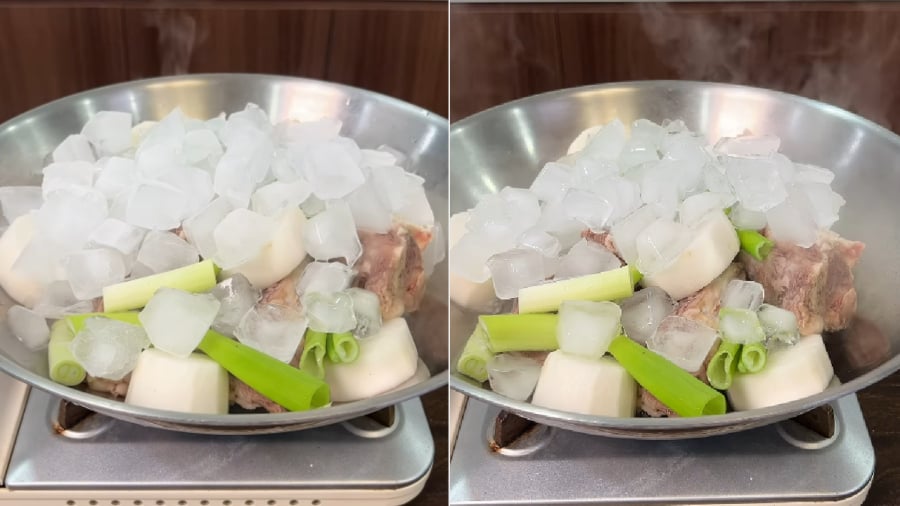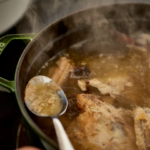Bone broth is a delicious and nutritious base for many dishes. The key to a good broth is clear, sweet-tasting broth, tender meat, and no unpleasant odors. Traditionally, this requires a long cooking time, but with these tips, you can achieve the same tasty results in less time.
Using Ice to Simmer Bones
This unusual method helps tenderize the meat and clarify the broth.
First, rinse the bones to remove any surface impurities. Soak them in a brine solution for an hour to draw out excess blood and reduce any gamy odors, especially effective for beef bones. Rinse again and briefly boil the bones for 5 minutes to further eliminate any unpleasant smells and impurities.
Now, it’s time to prepare the bones for simmering. Add the pre-boiled bones to a pot with some vegetables like turnips and carrots, and a little leek or onion. Here’s the unique part: add ice instead of water. The ice slowly melts, gently cooking the meat and infusing it with flavor.

Ice helps tenderize the meat and clarify the broth.
Adjust the cooking time depending on the quantity of bones. During cooking, regularly skim off any foam that rises to the surface to ensure a clear broth. Taste and adjust seasoning as needed.
Additional Bone Broth Tips
– Selecting the Right Bones
Choose bones suited to your dish. For extended simmering and rich broths, opt for marrow bones. For heartier soups with more meat, try ribs, pork knuckles, or oxtail.
You can also choose between pork and beef bones, depending on your preference.
– Bone Preparation
Rinse the bones and cut them into manageable pieces. Soak them in cold water for 30-60 minutes to remove any residual blood. Parboil to eliminate impurities and odors, then rinse again before simmering.
– Vegetable Enhancements
For added flavor and sweetness, include various vegetables in your broth. Carrots, turnips, pineapples, and onions are excellent choices. Herbs like ginger, leek, scallions, and cilantro roots also enhance the flavor profile. Adjust seasonings to suit your taste and desired dish.
The Ultimate Guide to Cooking Delicious and Nutritious Pig Kidney Porridge
Pork kidney congee is a flavorful dish, a delightful combination of fragrant toasted rice and crispy pork kidneys. The unique taste and texture of this congee make it an irresistible treat. With its mouthwatering aroma and delicious flavor, this congee is not just a tasty meal but also a nutritious one. Learn how to make this delectable dish and treat your family to a wonderful culinary experience.



































